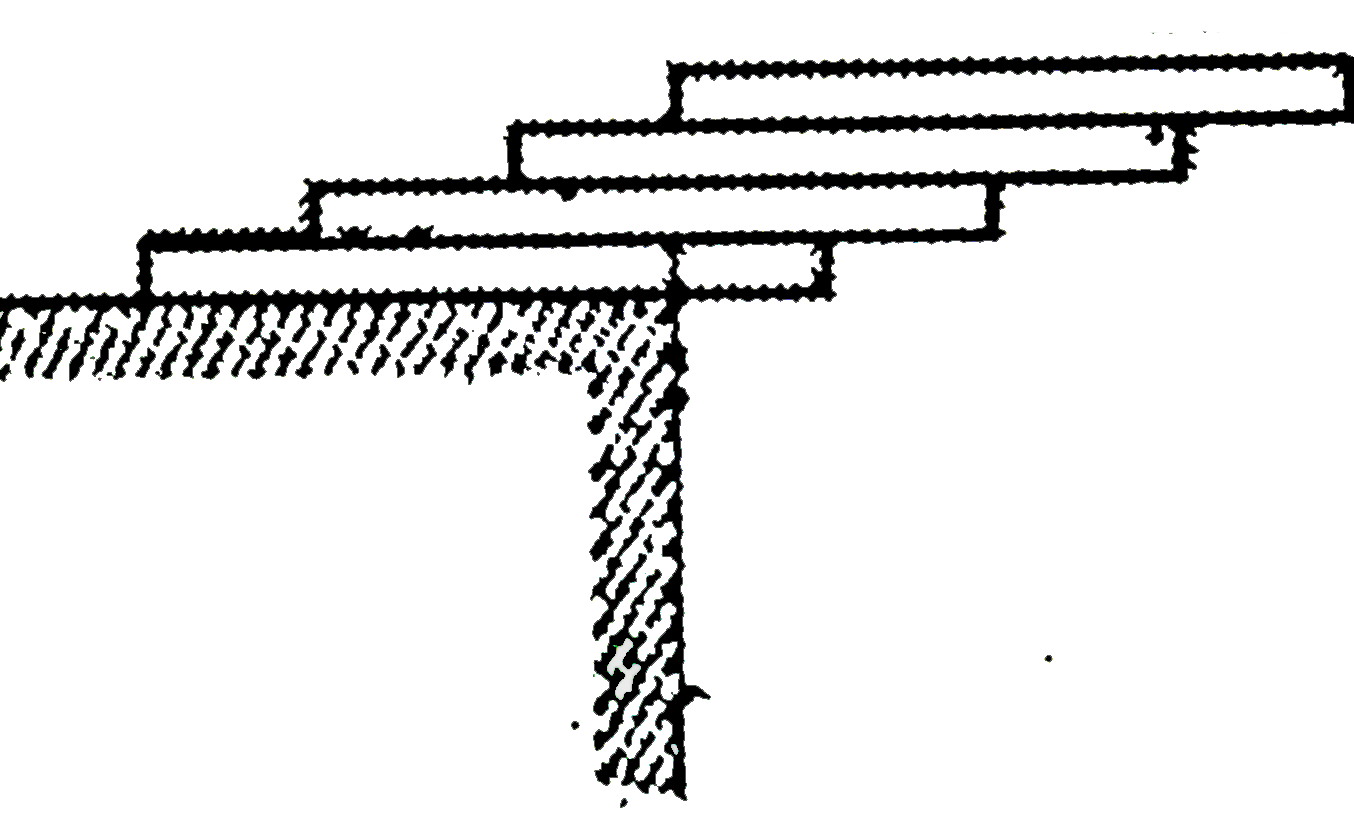Identical blocks each of mass M and length L are placed one above the other such that each extends out by a maximum length as shown in figure. Find the maximum extension of the nth block from the top, so that the blocks will not fall.

L/5
L/4
L/3
L
The correct Answer is:B
CM of bricks, above each brick must to be beyond its edge xcm=ΣmixiΣmi,xcm=L
x1=a+L2,x2=2a+L2,x3=3a+L2
(or) a=Ln
Topper's Solved these Questions
- SYSTEM OF PARTICLESBook:NARAYNAChapter:SYSTEM OF PARTICLESExercise:NCERT based questions
Explore 15 Videos
- SYSTEM OF PARTICLESBook:NARAYNAChapter:SYSTEM OF PARTICLESExercise:Level -I(H.W)
Explore 58 Videos
- SYSTEM OF PARTICLESBook:NARAYNAChapter:SYSTEM OF PARTICLESExercise:Level-II(C.W.)
Explore 64 Videos
- PHYSICAL WORLDBook:NARAYNAChapter:PHYSICAL WORLDExercise:C.U.Q
Explore 10 Videos
- SYSTEM OF PARTICLES AND ROTATIONAL MOTION Book:NARAYNAChapter:SYSTEM OF PARTICLES AND ROTATIONAL MOTION Exercise:EXERCISE - IV
Explore 39 Videos
Similar Questions
Two blocks A and B each of equal masses m are released from the top of a smooth fixed wedge as shown in the figure. Find the magnitude of the acceleration of the centre of mass of the two blocks.

View SolutionIn the situations shown in the figure surfaces are frictionless. Find the maximum extension of the springs if blocks are initially at rest and springs are initially in natural lengths.

View Solution
Knowledge Check
Four identical rods of mass M and length L are placed on one another on the table so as to produce the maximum overhang as shown in figure. The maximum total overhang will be :
 A3L4B24L25C25L24D4L3
A3L4B24L25C25L24D4L3A block of mass 1 kg is placed on a wedge shown in figure. Find out minimum coefficient of friction between wedge and block to stop the block on it.
 A0.6B0.9C1D0.2
A0.6B0.9C1D0.2Two blocks each having a mass M are placed as shown in the figure. The accleration of the system is:-
 A0Bgsinθ2CgsinθD2gsinθ
A0Bgsinθ2CgsinθD2gsinθ
Three identical blocks each of mass M are along a frictionless table and a force F is acting as shown. Which of the following statements is false ?

View SolutionThree blocks A,B and C of equal mass m are placed one over the other on a smooth horizontal ground as shown in figure. Coefficient of friction between any two blocks of A,B and C is 1/2. the maximum value of mass of block D so that the blocks A,B and C move without slippping over each other is

View SolutionTwo identical ladders, each of mass M and length L are resting on the rough horizontal surface as shown in the figure. A block of mass m hangs from P. If the system is in equilibrium, find the magnitude and the direction of frictional force at A and B.

View SolutionFind the maximum value of force F such that the block shown in the figure does not move

View SolutionThere block A B ,and C of equal mass m are placed one over the other on a frictionless surface (table) as shown in figure The coefficient of friction between any blocks A ,B and C is μ The maximum value of mass of block D so that the blocks A,B and C move without slipping over each other is

View Solution

